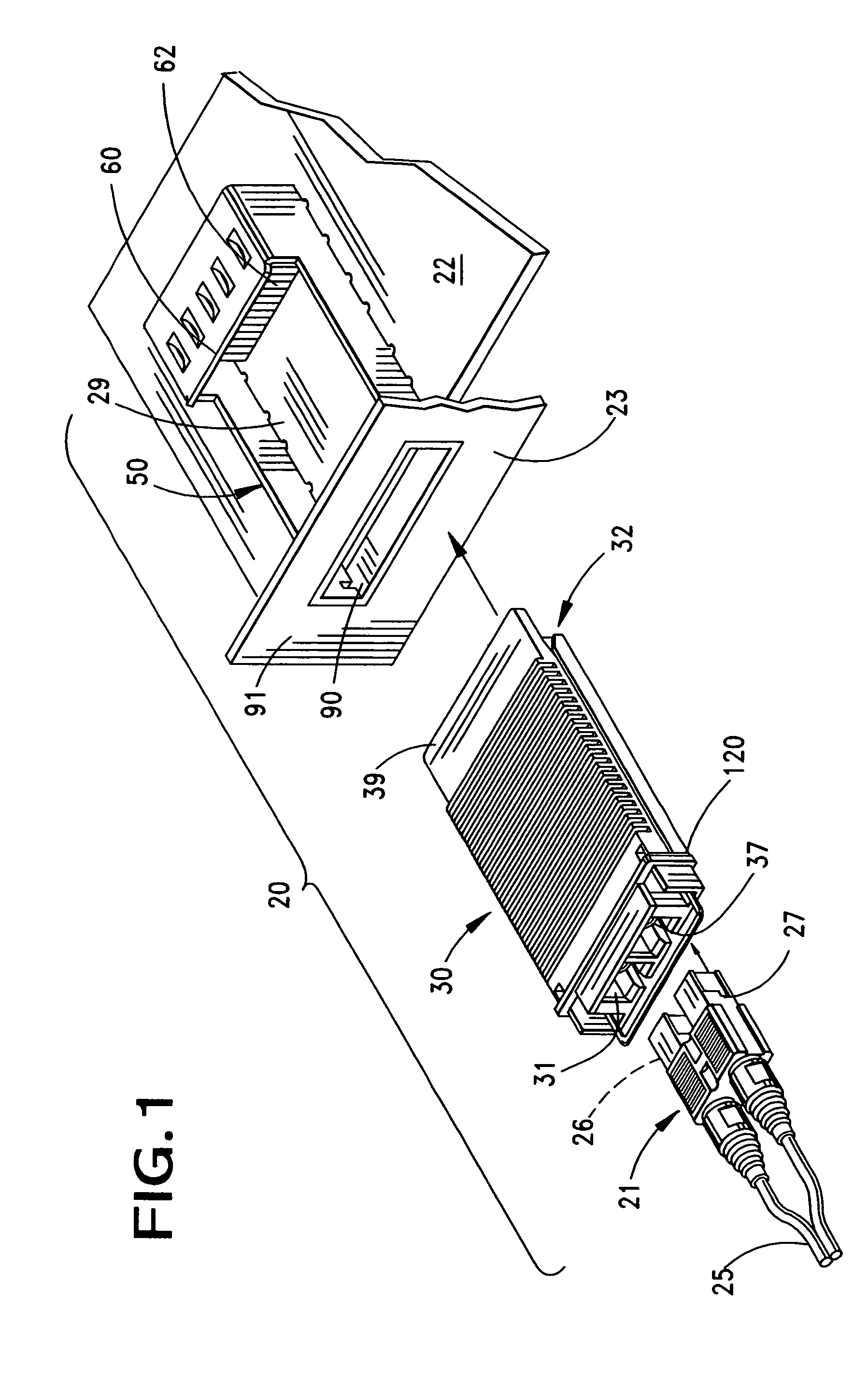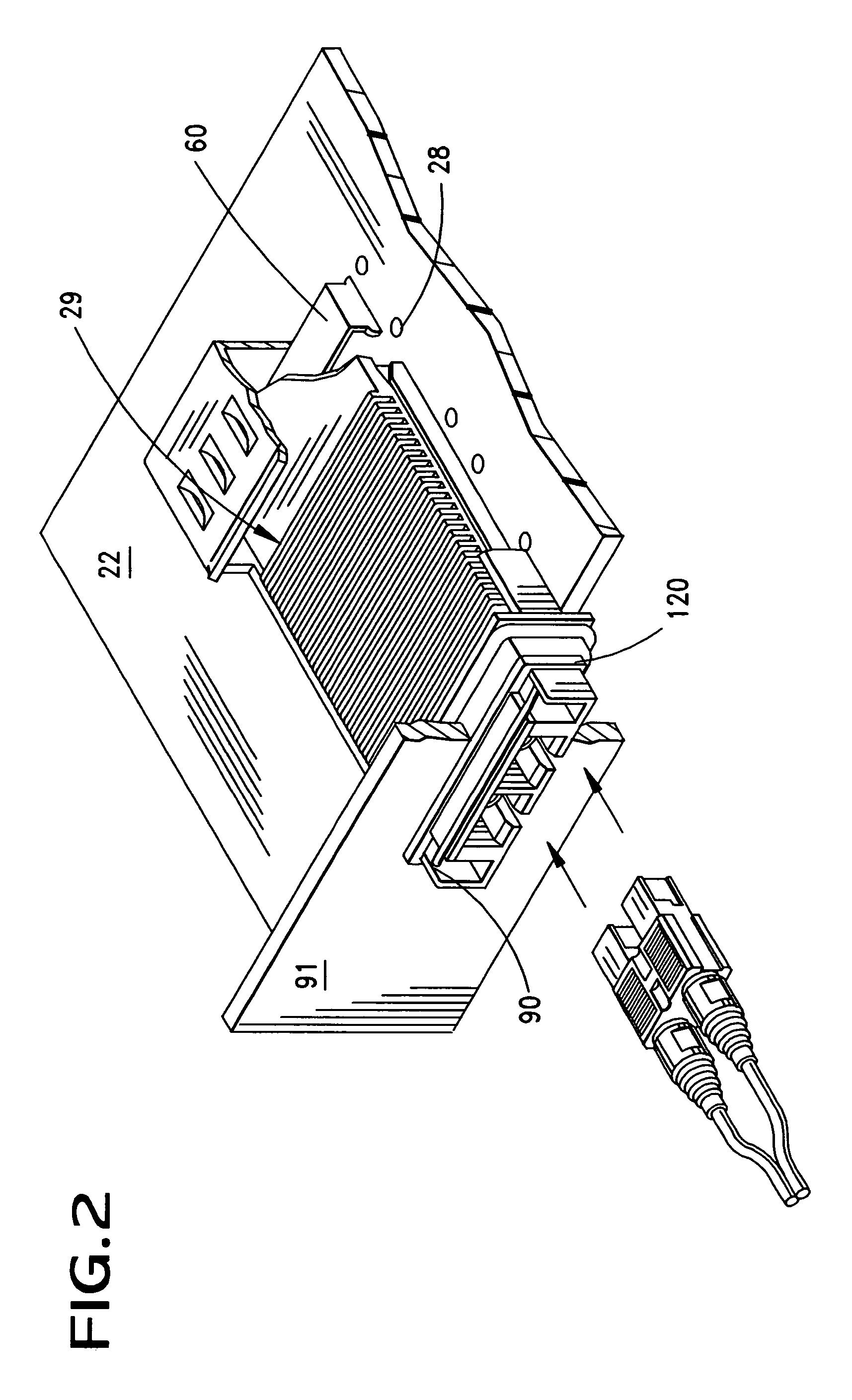Module retention latch assembly
a module and latch technology, applied in the field of adapter modules, can solve the problems of difficult operation of thumb screws in environments with many cables, complex structure, and many parts of adapter modules, and achieve the effect of easy sliding
- Summary
- Abstract
- Description
- Claims
- Application Information
AI Technical Summary
Benefits of technology
Problems solved by technology
Method used
Image
Examples
embodiment 200
[0071]Another embodiment 200 is illustrated in FIGS. 10–11 where the module 30 includes a bail latch 141 that has a recess or slot 146 formed therein to receive a cable or patch cord.
[0072]FIGS. 13–19 illustrate the interaction of the bail latch free ends and the module adapter frame more clearly. In FIG. 13, the assembly 200 is shown as an adapter frame 202 that has a pair of side walls which are interconnected by rear and front members. The adapter frame 202 is shown mounted to a circuit board 236 and the frame holds an electronic module 204 therein. The module shown is an optical transceiver, but it will be understood that other suitable types of components may be used as modules.
[0073]The module 204 has a pair of openings 206 that communicate with its front face to permit the coupling thereto of cables and the like. The module 204 is equipped with a moveable bail latch 208 of the type described previously. The bail latch 208 has a U-shape with a base 214 that may by moved up or ...
embodiment 500
[0076]FIGS. 20–32 illustrate another, “single-ended” embodiment 500 of the invention where one end of the bail latch is fixed for rotation only in the housing, while the other end of the bail latch is free to rotate and to translate (i.e., move laterally) in and out of engagement with an outer assembly or shell. In this embodiment, the module assembly can be seen to include a circuit board 501 and a frontal housing 502 that is attached to the circuit board 501 by way of a suitable means, such as mounting screws 504 that extend through a circuit board 501 and holes 600 formed in mounting tabs 520. A bail latch 550 is provided for opening and blocking access to the interior opening 560 of the housing 502. As illustrated best in FIGS. 20–21, the overall module assembly can be seen to include an elongated circuit board 501 having a rear insertion edge 512 with a plurality of conductive pads or traces 513 disposed thereon for engagement with opposing contacts of an edge connector (not sh...
PUM
 Login to View More
Login to View More Abstract
Description
Claims
Application Information
 Login to View More
Login to View More - R&D
- Intellectual Property
- Life Sciences
- Materials
- Tech Scout
- Unparalleled Data Quality
- Higher Quality Content
- 60% Fewer Hallucinations
Browse by: Latest US Patents, China's latest patents, Technical Efficacy Thesaurus, Application Domain, Technology Topic, Popular Technical Reports.
© 2025 PatSnap. All rights reserved.Legal|Privacy policy|Modern Slavery Act Transparency Statement|Sitemap|About US| Contact US: help@patsnap.com



